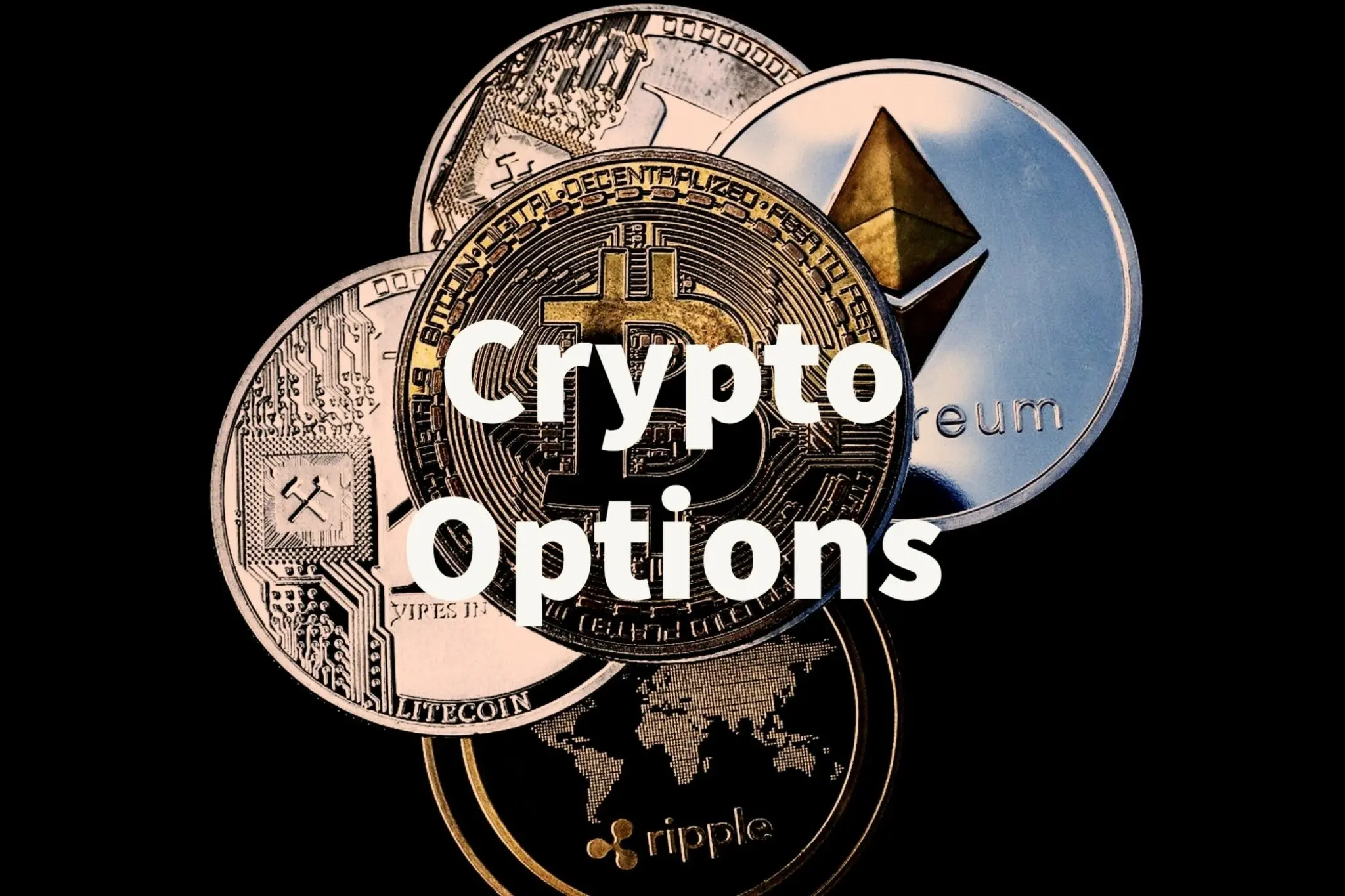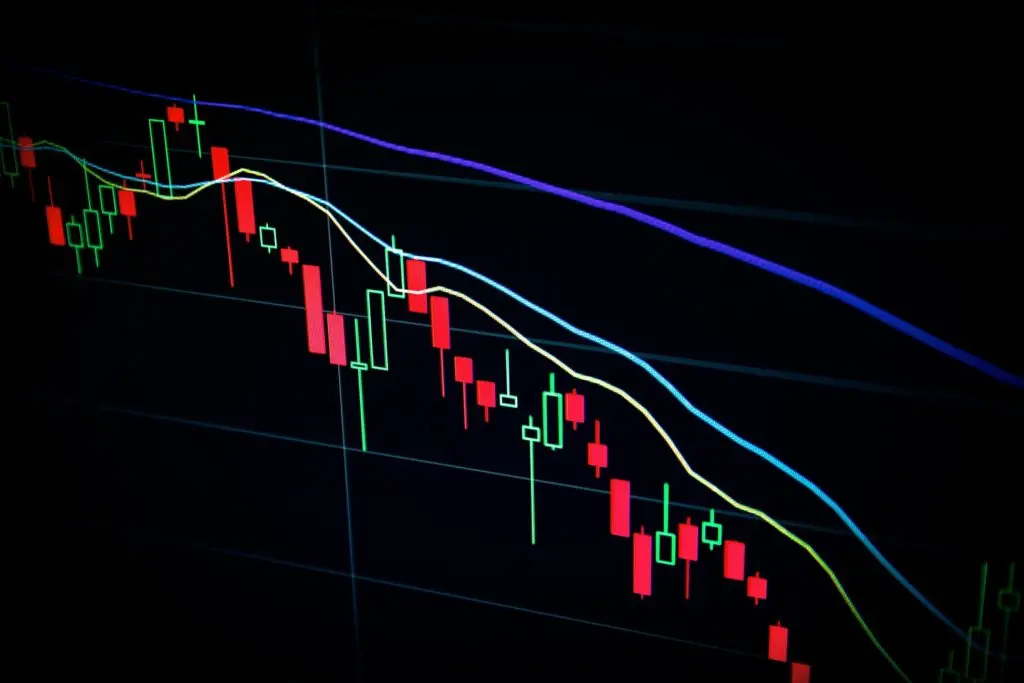In the world of crypto trading, understanding options expiry is key to making informed decisions.
Crypto options expiry refers to the date when options contracts cease to be valid. Many traders find themselves asking what exactly happens on this date.
When an option reaches its expiry date, it may either become worthless or get settled, depending on whether it finishes in-the-money or not.
This process helps you determine the actual value of the options you hold.
Crypto options work differently from traditional stocks because they often follow European-style contracts, meaning they can only be exercised at expiry.
This characteristic can influence your strategy and timing.
Knowing when and how these contracts settle can give you an edge in the fast-moving, often volatile, crypto markets.
Grasping the concept of crypto options expiry can empower you to make smarter trading moves.
By understanding how these contracts reach their end and the impact of expiry, you get better at managing risk and capitalizing on opportunities.
Understanding Crypto Options

Crypto options give you the ability to bet on the future price movements of cryptocurrencies. They are financial contracts that can be used for both hedging risks and speculating for profits.
Definition of Crypto Options
Crypto options are a type of derivative that allow you to buy or sell a cryptocurrency at a specific price within a set time frame.
There are two main types: call options and put options. A call option gives you the right to buy, while a put option lets you sell.
These contracts have an expiration date, after which they become invalid.
The strike price is the price at which you can execute the trade. If the market price is favorable compared to the strike price, you may profit. If not, the option may expire without value.
Crypto options can be complex and may involve significant risks. Always research thoroughly before participating.
Crypto Options vs. Traditional Options
Crypto options and traditional options share similarities but also have differences.
Traditional options involve assets like stocks or commodities, whereas crypto options are based on digital currencies like Bitcoin or Ethereum.
Both give you the right, not the obligation, to trade assets at a set price before expiration.
Crypto options tend to be more volatile due to the nature of digital currencies. This can lead to higher potential profits, but also increased risk.
Unlike traditional options, they often trade outside regular financial markets, offering more flexibility.
It’s important to understand these differences when choosing which type best suits your needs.
Key Components of Crypto Options Contracts
Crypto options contracts have several key components that you need to understand before trading.
These components include the strike price, expiration date, and premium. Each plays a critical role in determining the potential risks and rewards associated with the contract.
Strike Price
The strike price is the fixed price at which you have the right to buy or sell the underlying asset when exercising an option. This price doesn’t change over the life of the option.
It’s crucial because it determines whether the option is “in the money” (profitable) or “out of the money” (not profitable).
For instance, if you have a call option (right to buy) and the current market price is above the strike price, the option is “in the money.”
On the other hand, if you have a put option (right to sell) and the market price is lower than the strike price, you can profit.
Understanding the strike price helps you decide whether to execute the trade or let it expire. It’s important to select a strike price that aligns with your market expectations and risk tolerance.
Expiration Date
The expiration date is the last day on which you can exercise your option. After this date, the contract becomes void, regardless of whether you acted on it.
Crypto options often have specific expiration cycles, like monthly or quarterly. Knowing the expiration date helps you plan your strategy effectively.
Make sure to keep track of this date to avoid losing potential earnings or incurring losses.
Moreover, different strategies apply as you approach the expiration date.
Some traders might choose to close their positions early if they believe the option has met its potential before expiration.
Premium
The premium is the price you pay to purchase the option. This cost is influenced by several factors, including the strike price, expiration date, and market volatility.
When you buy an option, your initial cost is the premium. This is the maximum financial risk you take on when purchasing options.
Factors like market demand can also impact premium prices. High volatility often results in higher premiums since the potential for price swings increases.
Understanding the premium is crucial for evaluating the overall cost and potential value of the options contract. Keep track of it as you plan your trading strategies.
The Expiry Process

In the world of crypto options, understanding how expiration works is key. This includes knowing the specific expiration time and date of options and what happens if options expire early.
Expiration Time and Date
For crypto options, the expiration time and date are crucial. Options have a set date when they become void if not exercised.
This is typically the last Friday of the month, though it can vary.
At expiration, if the option is “in-the-money,” it is exercised or settled, often turning into control of the underlying crypto asset or a cash equivalent.
Knowing this date helps in planning your trading strategy.
Frequently, exchanges will provide exact times—some might expire at 4 PM UTC, while others may follow different clocks.
You must ensure you’re aware of these details, as missing them could lead to undesired outcomes in your trades.
Early Expiration Scenarios
Options can sometimes expire earlier than expected due to unusual market conditions or specific contract rules. These occurrences aren’t common but are essential to recognize.
If an option is “deep in-the-money,” brokers may encourage early exercise to capture the most value.
Alternatively, extreme market turbulence could lead to adjustments in expiration protocols.
Sometimes, exchanges may alter expiration details, offering early settlement options.
Keeping tabs on announcements from trading platforms and understanding any changes in protocol ensures you aren’t caught off-guard.
This preparedness is vital in navigating the shifting sands of crypto trading options.
Settlement Methods
Understanding how crypto options settle is crucial for traders. There are two main methods: cash settlement and physical settlement. Each method has distinct processes and implications for your trading strategies.
Cash Settlement
In cash settlement, option contracts are settled by the exchange of cash rather than the physical asset.
When the option expires, any profits or losses are realized by crediting or debiting cash to your account.
The settlement price is typically determined based on the asset’s market price at expiration.
This method is popular because it eliminates the need to handle the actual cryptocurrency, making it more convenient, especially for speculators and those not interested in owning the underlying asset.
Using cash settlement can help you manage risk since it simplifies the transaction process and involves only financial adjustments without the complexities of asset transfer.
Physical Settlement
Physical settlement involves the actual exchange of the underlying cryptocurrency when the option expires.
If you hold a call option and it’s in the money, you will receive the cryptocurrency at the strike price. For a put option, you deliver the asset.
This method requires you to have sufficient funds or holdings in your account to cover the purchase or delivery.
Physical settlement is often used by traders and investors who wish to eventually own or sell the underlying cryptocurrency.
This can be advantageous if you’re looking to lock in a purchase price or sell at favorable terms, but it requires you to manage the logistics of asset transfer and ownership.
Factors Influencing Options Pricing

Options pricing is affected by many elements like market volatility, the time left until expiration, and interest rates. Understanding these factors helps you get a clearer picture of how options are valued and can guide your trading strategies.
Volatility Impact
Volatility represents how much an asset’s price swings over a certain period.
High volatility means greater risk and potential reward. For options, higher volatility leads to higher premiums.
This is because volatile markets increase the chances that the option will be profitable, making it more valuable.
Traders watch metrics like the Implied Volatility (IV) to assess expected future movements.
Keep in mind that both unexpected and expected events can impact volatility, influencing how much an option is worth.
Time Decay
Options have an expiration date, and as this date approaches, the option loses value.
This is known as time decay or Theta. The closer to the expiry date, the faster the value drops.
For example, if you hold a call option, as time ticks away, the likelihood of profiting decreases, affecting premiums.
Traders often need to decide if holding is worth it as the expiration date nears, given this inevitable decline.
Interest Rates and Dividends
Interest rates can also alter how options are priced.
When interest rates rise, the cost of holding an option can increase. This generally affects call options more than put options.
Higher rates might make call options more attractive as the opportunity cost of not holding the stock increases.
Dividends are also a factor since they can affect the underlying asset’s price.
If a stock pays dividends, it may lower the price after the ex-dividend date, impacting options pricing.
Being aware of upcoming dividends can be crucial in valuing options correctly.
Impact of Expiry on Market Dynamics
Crypto options expiry often causes notable shifts in trading behavior and market conditions. These changes can lead to price movements and influence how much or how little assets are traded.
Price Manipulation Near Expiry
Near expiry dates, market volatility can spike.
Traders may try to influence the price to end at a level that benefits their positions. This behavior is known as “pinning.”
Pinning happens when many options contracts expire at the same price. Traders might buy or sell large quantities of the asset, aiming to push the price toward the strike price of significant options contracts.
This activity can lead to short-term price swings and unpredictable changes, impacting traders with open positions.
Expiration and Market Liquidity
Market liquidity can see notable changes around options expiration.
You might notice increased trading activity before expiry as traders adjust their positions. This is due to efforts to capitalize on or protect against potential price movements.
After strike dates pass, liquidity can decrease.
The market may feel quieter because the rush to buy or sell ahead of expiry has ended.
As liquidity affects your ability to execute trades without impacting the price, these shifts are crucial to consider.
Strategies for Crypto Options Expiry
Crypto options trading offers opportunities to both maximize profits and minimize losses as options approach their expiry. Having a well-thought-out plan can make a significant difference in your trading outcomes.
Maximizing Profits
One way to maximize your profits is by timing your trades properly.
Know the expiration date and monitor price trends closely. By predicting market movements, you can make trades that capitalize on favorable conditions.
Consider using leverage strategically to amplify potential gains.
Be cautious and only use leverage if you are experienced, as it can increase both profits and risks.
Spreads allow you to benefit from different market conditions.
A bull spread can help you profit from an expected rise in crypto prices. Conversely, a bear spread can help when you anticipate price drops.
Follow trends and adjust spreads based on market conditions to optimize profit potential.
Minimizing Losses
To minimize losses, implementing a stop-loss order is essential.
This helps limit losses by automatically selling the option if it falls below a certain price.
It’s a protective measure that ensures you do not incur larger-than-expected losses.
Utilize hedging strategies like buying puts if you currently hold crypto.
This can protect your investments by allowing you to sell your assets at a previously agreed price if the market turns against you.
Developments in the market can shift rapidly.
Frequent monitoring is necessary to react swiftly to changes.
Stay informed about market news and trends to adjust your positions and avoid substantial losses.
Practicing risk management by allocating only a portion of your capital to options trading can help reduce exposure to potential losses from volatile market swings.
Make sure to maintain a diverse portfolio.
Role of Crypto Exchanges and Platforms
Crypto exchanges and platforms play a crucial role in managing the lifecycle of crypto options. They provide the system for processing expirations and ensuring that settlements occur efficiently.
Exchange Role in Options Expiry
When trading crypto options, exchanges manage the expiration process. They maintain systems to track contract details, ensuring that both buyers and sellers meet their obligations.
You rely on these exchanges to notify you when options are about to expire. They also calculate any gains or losses you might have.
Choosing a reliable exchange is critical because it can impact your trading experience. Exchanges are responsible for the integrity of the transaction, making them a key part of the options expiry process.
Automated Expiry and Settlement Features
Many exchanges offer automated features for expiry and settlement. These systems execute your trades automatically once contracts reach their expiry dates.
Automation helps reduce errors and streamline the settlement process. If you set up these features, your trades will be handled even if you are not actively monitoring the market.
Automated systems also improve efficiency in executing transactions, ensuring that both parties receive what they are due.
By using these automated tools, you can focus more on strategy rather than the administrative aspects of trading.
Legal and Regulatory Considerations
When trading crypto options, understanding legal regulations is crucial. These rules can vary widely by country, affecting how options are traded, taxed, and reported.
Compliance is key to operating within the law and avoiding fines.
Jurisdictional Variations
Crypto options are treated differently depending on where you are. Each country has its own set of laws and guidelines.
For instance, some nations consider cryptocurrencies as taxable assets, while others do not. This impacts both individual and institutional traders.
In the United States, the Commodity Futures Trading Commission (CFTC) plays a key role in regulating crypto futures and options. European Union countries might have different views, leading to a varied landscape.
Knowing the specific rules in your area is vital for legal trading.
Compliance and Reporting
Compliance includes adhering to laws and regulations set by authorities. Ignoring these can lead to penalties.
For instance, traders in many jurisdictions must keep records of all transactions, including trade dates, amounts, and gains, for tax reporting.
Know-Your-Customer (KYC) and Anti-Money Laundering (AML) policies are also commonly required. These ensure that platforms can verify the identity of traders and prevent illicit activities.
Failure to comply can result in significant legal issues, including fines and restricted trading rights.
Risks and Mitigation
Navigating crypto options expiry presents certain risks, but understanding counterparty risks and effective measures can help. Managing operational risks further ensures smooth transactions.
Counterparty Risk
When trading crypto options, you might face counterparty risk. This occurs if the other party in the contract cannot meet their obligations.
If your counterparty defaults, you might lose your expected gains and investment.
To reduce this risk, it helps to deal with established and trusted platforms. Look for those using collateral to back contracts and ensure counterparties are verified.
Consider trading on decentralized platforms that use blockchain technology, which can offer more transparency and security.
Crypto markets can be volatile, and counterparty risks may increase during sudden market shifts.
Keeping updated on market trends and counterparty health can give you a more secure trading experience.
Operational Risks
Operational risks involve internal system failures or process issues that might impact your trading. This could be due to technical glitches, security breaches, or even human errors.
One way to tackle operational risks is by selecting platforms known for robust security. Use two-factor authentication to add an extra layer of protection to your accounts.
Regularly update your software to ensure it remains secure against new threats.
Monitoring platform performance helps identify potential issues early. Diversifying platforms used for trading can also lessen impact if one experiences problems.
Making these practices routine can help you avoid disruptions during the crucial expiry period of your crypto options contracts.
Frequently Asked Questions
Exploring cryptocurrency options involves understanding how contracts settle, when they expire, and what influences them. Concepts like the “max pain” point and the expiry calendar play a key role.
What are the common settlement practices for cryptocurrency options?
Cryptocurrency options are often cash-settled. This means no actual exchange of cryptocurrency takes place. Instead, the difference between the option’s strike price and the market price at expiration (if in-the-money) is paid in cash.
What occurs at the conclusion of a cryptocurrency options contract?
At expiration, if an option is in-the-money, it is automatically exercised. This results in a cash settlement based on the difference between the market price and the strike price. If out-of-the-money, the option expires worthless.
How does the ‘max pain’ point influence BTC options expiry?
The “max pain” point is the price at which options holders suffer the most financial loss. It can influence trading behavior as investors and traders might move prices towards this point to minimize their losses leading up to expiration.
At what exact time do Bitcoin options typically expire?
Bitcoin options typically expire at a specific time set by the exchange. For example, CME Group’s cryptocurrency options generally expire at 4 p.m. London time. Always check with your specific exchange for exact times.
Can you explain the significance of the Bitcoin options expiry calendar?
The Bitcoin options expiry calendar shows when contracts are due to expire. This helps traders anticipate potential market movements and liquidity changes. Tracking the calendar aids in aligning trading strategies with expiry events.
What are the implications of Bitcoin options expiring for traders and the market?
The expiration of Bitcoin options can lead to increased market volatility and sudden price shifts.
Traders often adjust their positions ahead of expiration, which can impact supply and demand dynamics.
Understanding these effects helps in navigating the market efficiently.
